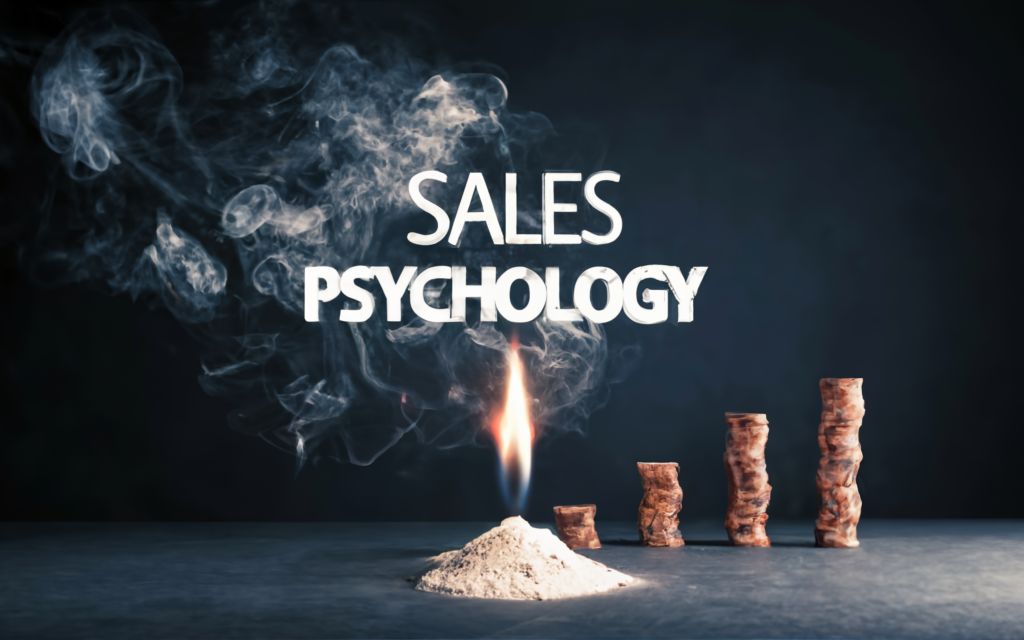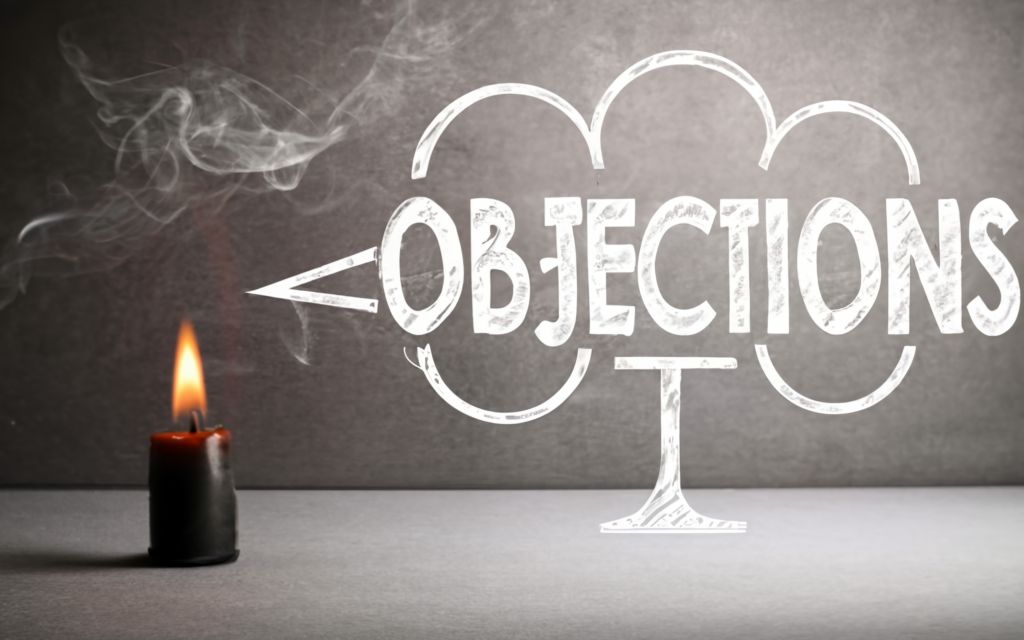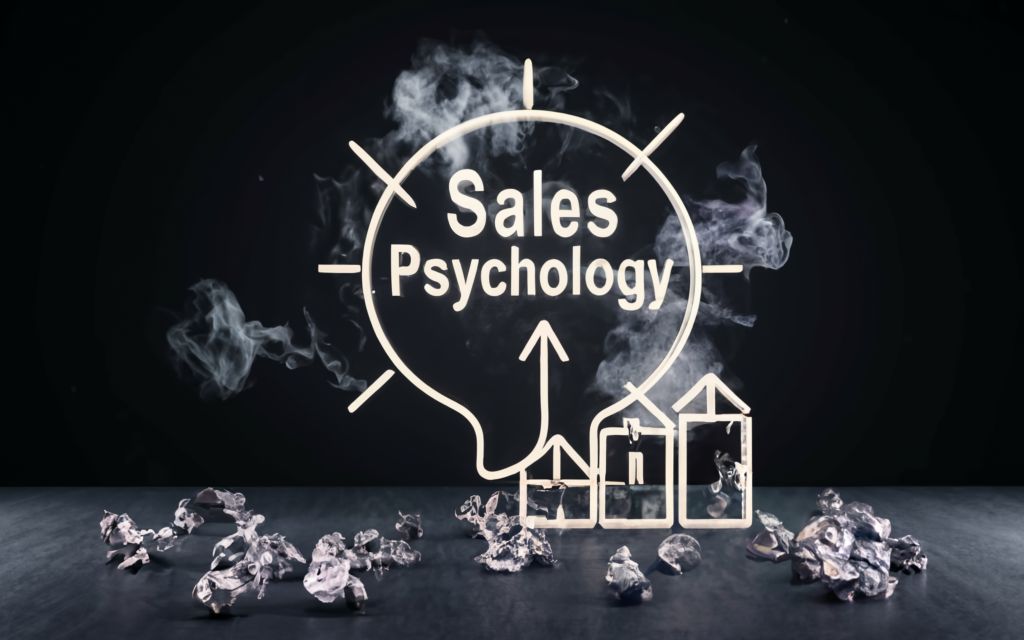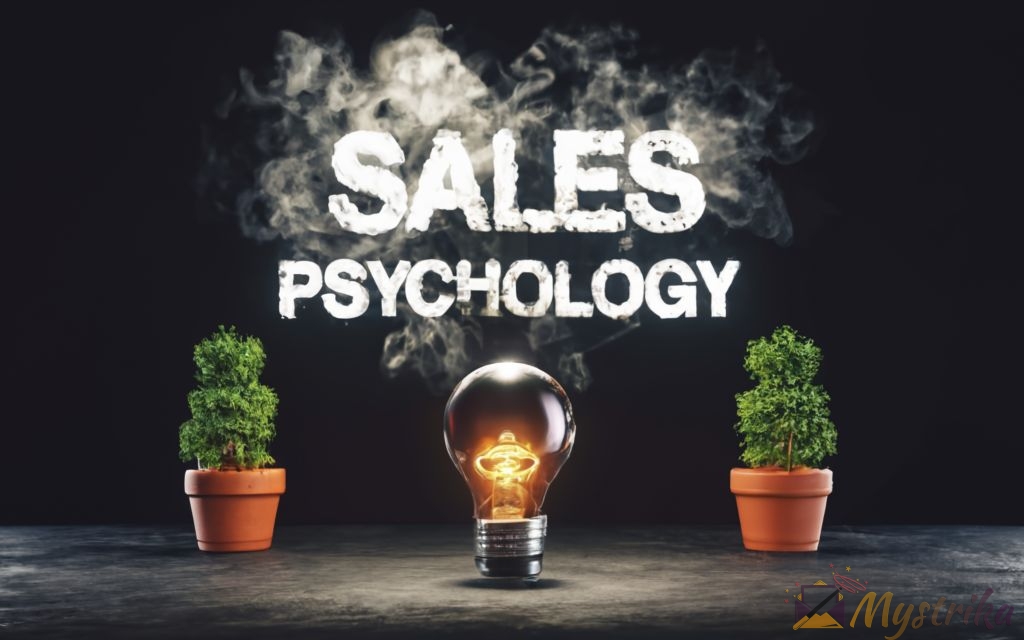Unleash your selling potential through the psychology of persuasion. Discover proven frameworks to understand customers, influence decisions, and master sales. Learn actionable sales psychology techniques to connect better, build rapport faster, close more deals, and maximize revenue.
Introduction to Sales Psychology and Understanding Customers
Understanding psychology can provide useful insights into human behavior. This is especially true in sales, where you are actively trying to influence prospects to make a purchase. Sales psychology techniques allow you to connect better with customers, improve trust and rapport, and ultimately boost conversions.
What is Sales Psychology and Why is it Important?
Sales psychology refers to the study of psychological factors that affect the buying decision process. It provides frameworks for understanding the customer’s motivations, pain points, and thought patterns when evaluating a product or service.
Mastering sales psychology is crucial for succeeding in modern selling. With so much choice and information readily available, buyers are more informed and demanding. A key statistic – it takes an average of 5-12 contacts to make a sale. You need to leverage psychology to break through the noise.
Here are some key reasons why sales psychology matters:
- Aligns with evolution of selling – Relationship-based, consultative selling is essential today. Psychology helps build genuine connections.
- Counters customer biases – All buyers have inherent biases. Leveraging psychology helps counter them.
- Influences subconscious factors – Many purchase drivers are emotional/irrational. Psychology addresses subconscious motivations.
- Enhances trust and credibility – Understanding the customer makes you more authentic and trustworthy.
- Customizes experiences – People have different personas. Psychology allows personalized interactions.
- Overcomes objections – Psychology reveals the root of objections allowing you to diffuse them.
- Closes deals – Finely tuned persuasion tactics based on psychology enable you to seal deals.
In summary, sales psychology helps you align your messaging, strategy and approach to be irresistible to each customer. Let’s look at some key principles of consumer psychology.
Key Principles of Consumer Psychology in Sales
There are several well research psychological phenomena that influence purchasing decisions. As a salesperson, you should be aware of them to enhance your odds of closing.
Reciprocation – People subconsciously try to repay others for free gifts, favors, concessions etc. Leverage this to get reciprocal concessions.
Social Proof – Customers are strongly influenced by what others in their peer circle are doing. Use client logos, testimonials, and peer recommendations as social proof.
Consistency – People aim for consistency between attitudes and behaviors. Get written or verbal commitment to increase chances of follow-through.
Authority – Displays of authority through credentials, certifications, press mentions etc. enhance perceived expertise.
Scarcity – Opportunities seem more valuable when availability is limited. Create exclusivity to make your offers more desirable.
Anchoring – Initial pricing anchors shape perception of value. Set anchors strategically using prices, payment plans etc.
Contrast – Buyer’s evaluation depends on what they compare your offer against. Use strategic comparisons to seem superior.
Familiarity – Customers prefer familiar options as they seem safer. Leverage brands, cultural references, personal details to seem familiar.
These psychological principles serve as a framework for influencing customers in an ethical manner. Let’s look at some tangible benefits of mastering sales psychology.
Benefits of Leveraging Psychology to Influence Buying Decisions
Becoming fluent in sales psychology translates to very tangible results:
- Higher conversion rates – When you know how to persuade customers better, more prospects become paying customers. Industry veterans using psychology have 50-70% conversion rates.
- Bigger deal sizes – Tactics like anchoring and scarcity allow you to negotiate higher prices per deal. Deals can be 20-30% larger.
- Shorter sales cycles – Psychology helps build connections and desire rapidly. Sales cycles can become 25-50% shorter.
- Lower customer acquisition costs – Higher conversions and faster sales cycles mean your customer acquisition costs are lower. Each customer costs 5-10x less to acquire.
- Reduced churn – Happy, satisfied customers are less likely to churn. Psychology helps delight and retain customers longer.
- Repeat purchases – Customers who trust you are more likely to buy again. Psychology builds relationships that drive repurchase.
- Referrals – Satisfied, loyal customers become advocates. This word-of-mouth leads to warm referrals and introductions.
In summary, sales psychology enables you to sell smarter. The additional revenue, higher productivity, and reduced costs directly boost your commissions and career growth. That’s why top performers constantly learn new psychology tactics.
Hopefully this provides a solid overview of sales psychology – why it matters, key principles, and tangible benefits. The rest of this guide will cover specific techniques to leverage psychology across every stage of the selling process. Let’s dive in!

Applying Sales Psychology Techniques to Connect with Prospects
Now that we’ve covered the fundamentals, let’s explore how to apply sales psychology to actually connect with leads and prospects. Mastering these practical tactics is crucial for building relationships that drive sales.
Building Rapport and Trust with Customers Through Communication
The key to influencing buyers is making genuine connections. This requires rapport – a close, harmonious relationship where the customer is receptive to your message.
Active listening is essential for establishing rapport. Listen intently to grasp the customer’s exact needs. Reflect their own words back to show you understand. Ask thoughtful questions to learn more about motivations.
Validate the prospect’s frustrations. Express empathy for their problems. This makes you relatable. Compliment them on insights to affirm their competence. People are more receptive when they feel heard and understood.
Match the customer’s communication style. Observe their tone, speed, language etc. and adapt to mirror them. This builds subconscious affinity. Avoid jargon or complex concepts that may alienate them. Keep it conversational.
Be helpful, not pushy. Offer insights freely without explicitly selling. Educate prospects on potential solutions. This establishes your credibility. Don’t be overbearing. Let the customer guide interactions. Patience and helpfulness fosters trust.
Candor and transparency are disarming. Admit weaknesses or limits honestly, where relevant. Share your motivations, journey or values when appropriate. This humanizes you. Continually reassure the customer and address concerns. This reduces skepticism.
In summary, rapport depends on mindset, not techniques. Focus on understanding motivations, validating feelings, and helping openly. This forms an authentic relationship that makes customers receptive.
Tailoring Your Sales Approach to Different Personality Types
Customers have inherently different personalities that dictate buying behaviors. Effective salespeople tailor their strategy accordingly.
Analytical – These prospects want proof and technical details. Provide ample data, analyst reports, demos etc. to establish credibility. Explain functionality logically using their preferred communication style.
Amiable – These buyers prioritize alignment with their values. Establish shared goals and ideals. Be cooperative rather than pushy. Make them feel comfortable opening up to you.
Expressive – Such customers appreciate enthusiasm and directness. Use visual aids. Add humor and personal anecdotes to build affinity. Ask open-ended questions that allow them to talk.
Drivers – These prospects want expertise and confidence. Display competence by sharing success stories. Provide options and recommendations decisively. Assure them you’ll handle execution.
There are many psychometric tests like DISC that categorize personalities. While formal tests aren’t essential, you should intuit key traits based on conversations. Adapt accordingly to seem familiar.
A common mistake is interacting according to your own style preference rather than the customer’s. Resist this. Observe cues to determine their comfort zone. Match their pace, tone and language. With experience this becomes second nature.
Using Reciprocation and Social Proof to Influence Buyers
Reciprocation and social proof are potent psychological triggers. Subtle usage in conversations generates immense goodwill and validity.
Reciprocation means providing something of value with no initial strings attached. This could be advice, a free trial, a case study or even just a compliment. Customers subconsciously feel obligated to reciprocate your gesture.
This is very effective early in the evaluation stage. Resist overt selling. Offer something helpful instead. Buyers will instinctively want to reciprocate by being more receptive. They may even feel compelled to match your generosity.
Social proof leverages others’ endorsement to seem more valid. Mention notable clients you’ve solved similar problems for. Get prospects to speak with happy customers. Highlight positive reviews. This establishes you as a credible, proven choice.
Sharing specific metrics like sales lift, ROI and retention boosts believability. Big recognizable logos often provoke an implicit “Well, if it works for them…” reaction. Reputable publications praising your solution also provide social proof.
However, don’t overdo it. Occasional casual references are more effective than bombarding customers. Let delighted users tell the story rather than being boastful. This makes the social proof seem authentic.
Appealing to Emotions vs Logic Based on the Buyer’s Motivations
Customers buy for logical and emotional reasons. Understand which dominate to shape persuasive messaging.
Some prospects want robust technical analysis. Provide detailed functionality comparisons. Use quantified metrics like efficiency gains, cost reductions and ROI. Craft a rational business case. Appeals based on logic and pragmatism work best here.
Other buyers are motivated by emotions like hope, fear or ambition. They seek confidence, security or status. Make aspirational appeals that align with goals. Use stories to make benefits relatable. Address anxieties transparently. Stirring emotions often sways these prospects.
In reality, most customers consider both logic and emotions. Emphasize the dominant driver, but incorporate some of the other. For very analytical buyers, incorporate some aspirational elements. For very emotional prospects, include some data for reassurance. Cater to both in balance.
To determine the right approach, listen for cues early on. What questions do they ask most? Are they more data-driven or vision-driven? Understand their style and act accordingly. Psychology allows customizing persuasion to what motivates each prospect.
This covers major techniques to apply sales psychology when interacting with leads. Rapport-building, personalization, reciprocation and emotional/logical appeals provide the influence needed to convert more prospects. Let’s now explore how to decode customer behaviors using psychology.

Strategies for Reading Body Language and Verbal Cues from Prospects
Mastering sales psychology requires decoding subtle behaviors prospects exhibit. Their body language and verbal cues provide insights into internal state and intentions. Here are proven techniques to interpret these signals.
How to Interpret Body Language During Sales Interactions
Body language communicates feelings and reactions that people may be unwilling or unable to verbalize. It provides an honest subconscious readout.
Posture – Prospects leaning forward express interest and engagement. Leaning away signals discomfort or hostility. Mirror their posture to build subconscious affinity.
Arms/legs – Crossed limbs indicate defensiveness. Open arms and legs denote receptiveness. Match their position to seem familiar.
Hands – Clasping hands together communicates nervousness. Touching one’s face is a sign of doubt or rejection. Hand gesturing suggests enthusiasm.
Eyes – Consistent eye contact shows trust and confidence. Frequent glancing away signals discomfort or deceit.
Face – Relaxed eyebrows and smiles represent positivity. Frowned brows, tight lips reveal displeasure. Yawning or loss of focus indicates boredom.
Head – Upright, steady head shows interest and confidence. Tilted head suggests criticism or uncertainty. Nodding signifies agreement and receptiveness.
Proxemics – Getting closer usually signals engagement and interest. Withdrawing implies hesitation or rejection. Mirror their proximity changes.
These cues allow you to gauge reactions in real-time. If you see disengaged signals like leaning away or lack of eye contact, modify your approach to re-engage them. Adapt speech, materials and pacing to their live feedback.
With practice, reading body language becomes second nature. It provides a channel of communication beyond the customer’s words. Paying attention builds stronger subconscious connections through every interaction.
Listening Skills to Decode Verbal Buying Signals from Customers
Active listening also reveals crucial insights through verbal behaviors. Here are the key aspects to pay attention to:
Tone – Warm, friendly tones indicate positivity. Sarcastic, curt tones reveal frustration. Listen for shifts in tone during discussions.
Speed – Quick excited speech shows enthusiasm. Slow sluggish responses signal boredom or lack of interest. Match their speed.
Volume – Louder speech expresses interest and conviction. Quiet muted voices suggest uncertainty or anxiety. Lower your volume if a customer is loud.
Word choice – Specific, detailed terminology implies knowledge and authority. Generic terms reveal unfamiliarity. Use their precise vocabulary.
Repetition – Repeating your own phrases back indicates understanding and agreement. Customers tend to repeat favorable points.
Questions – Lots of thoughtful questions represent engagement. Few or no questions imply passiveness or apathy. Answer thoroughly.
Issues – Note areas that generate the most discussion or emotion. This identifies pain points to address.
Listen for cues like changes in tone, fast responses signaling enthusiasm, or repeated phrases showing favor. Ask follow up questions to uncover more insights. This builds a holistic understanding of customer needs.
Asking Questions to Reveal Customers’ Subconscious Motivations
Asking intelligent questions is an art that reveals hidden psychological insights. Phrase questions conversationally, not like an interrogation. Here are proven approaches:
Open questions – Avoid yes/no questions. Ask “what do you like about X?” rather than “do you like X?”. This gets detailed responses.
Follow-up questions – Ask “could you elaborate on that?” or “why is that important?”. This uncovers deeper motivations.
Clarifying questions – Ask them to explain acronyms or briefly summarize concepts. This checks understanding.
Personal questions – Quiz them about hobbies, family, accomplishments. This builds rapport.
Leading questions – Suggest a trait to confirm it eg “you seem like someone who values timeliness?” People are more likely to align with your conclusion.
Mirroring questions – Repeat their own question back before answering. This signals you truly heard it.
Mastering a mix of open, probing, specific clarifying questions extracts maximum insights. Paired with listening for key verbal cues, you can comprehensively map the customer’s psychology.
This equips you to tailor messaging to align with unstated needs they themselves may not realize consciously. Let’s build on this to understand the buying decision process.
Understanding the Customer’s Decision Making Process
Customers follow a typical journey when evaluating and selecting products. Understanding this decision making process allows you to guide prospects appropriately.
Factors that Influence Customers’ Decision Making
Many psychological factors shape how prospects evaluate options to reach a final decision. Being aware of these drivers allows you to direct buyers favorably.
Risk aversion – Customers are inherently risk averse. They prefer minimal change and safe bets. Highlight reliability, history and social proof to minimize perceived risk. Offer guarantees as well.
Heuristics – People use mental shortcuts like brand, price, credibility etc. to evaluate quickly. Meet buyer heuristics like being an authoritative category leader.
Anchoring – First impressions stick. Set a strong anchor highlighting value over price. This makes your offer seem superior later.
Loss aversion – Prospects dislike losing what they already have. Show how you help retain existing benefits rather than requiring compromise.
Choice paralysis – Too many options is overwhelming. Present a concise, structured evaluation process. Limit choices to avoid analysis paralysis.
Status quo bias – Customers lean towards maintaining their current state unless the incremental value is very apparent. Quantify improvements compellingly.
Endowment effect – People overvalue what they already possess or have committed to. Get prospects to invest time, share info etc. to increase perceived ownership.
Social approval – Peers heavily influence decisions, especially for high-visibility solutions. Facilitate conversations with happy reference customers to provide social proof.
Appeal to these core drivers throughout the evaluation process. Shape messaging to reduce perceived risk and status quo inertia in favor of your offer.
Aligning Your Sales Process with the Buyer’s Journey
The typical B2B customer’s journey comprises several key stages:
Research – Identify core frustrations. Offer useful education addressing pain points without overt selling. Provide collateral like guides, blogs etc.
Solution research – Share how you can resolve the prospect’s problem better than alternatives. Give demo or trial access to build conviction.
Risk evaluation – Address concerns transparently. Highlight security, privacy, support etc. to reduce perceived risk. Share case studies and testimonials.
Proposal review – Provide a concise but comprehensive proposal summarizing the value, pricing, SLAs etc. Simplify next steps.
Selection – Position your superior ROI, alignment with goals etc. Request written intent to purchase. Gradually lead prospect to say “yes”.
Guide customers through each stage, providing the appropriate information and reassurance needed. Avoid information overload. Let the prospect lead interactions.
Helping Prospects Rationally Evaluate Your Offer’s Value
To select your solution, prospects need a structured approach to compare options rationally. Provide this framework to guide evaluation favorably:
Define requirements – Help the customer outline their specific needs, priorities and constraints. Which capabilities are mandatory vs. optional? What factors are non-negotiable?
Side-by-side comparison – Populate a matrix comparing solutions across requirements. Include competitors. Metrics like ROI can demonstrate your superiority.
Demo – Let prospects experience your product. Set up real-world use cases relevant to them rather than a generic demo.
Cost-benefit analysis – Have the customer map benefits against TCO. Help them assign dollar values to specific capabilities and outcomes you deliver better.
Risk analysis – Identify potential downsides like transition pain, vendor risk etc. and address transparently. Provide assessments.
ROI forecast – Projectquantified savings you will deliver. Calculate break-even period. Share ROI studies in similar use cases.
Equipping customers with this process gives them a logical, repeatable way to evaluate options apples-to-apples. They can rationally confirm your product’s superiority. The next phase is skillfully closing the deal.
Leveraging Psychology to Overcome Objections and Close Deals
Mastering sales psychology is crucial for navigating objections skillfully and ultimately closing the deal. Let’s explore proven techniques.
Anticipating and Addressing Potential Objections Before They Arise
Experienced salespeople foresee likely objections and address them proactively before they derail deals.
Start by listing your top 5-10 most frequent objections like price, change resistance, competitor comparisons etc. Supplement with secondary objections specific to this prospect.
For each objection, script a concise response highlighting your strengths. Provide evidence like ROI calculators, case studies and testimonials that counter the concern.
Articulate these objection handlers clearly when presenting your solution. This prevents objections even arising by preemptively answering doubts.
Occasionally ask “Does this make sense so far?” or “Do you foresee any concerns about X?”. This surfaces unstated objections to address explicitly.
Being proactive prevents prospects from fixating on objections. You guide discussion favorably on your terms. The customer has fewer barriers to say yes.
Diffusing Resistance and Doubt to Seal the Deal
Despite best efforts, objections will still arise occasionally. Handling them artfully is critical.
Start by listening patiently without interruption. Let the prospect fully voice their objection until the end. Reflect it back to confirm you understand.
Respond with empathy first. Acknowledge the validity of their concern. Express that it’s a fair question you often hear. This defuses tension.
Only then address the substance. Have compelling facts, figures, stories etc. ready to overcome the objection. Keep your response concise and tie it back to their priorities.
Conclude by confirming the objection is resolved. Say “Does this help provide more clarity on X?” or “How well does this address your concern about Y?”. Get explicit agreement.
Thank customers for thoughtful objections – it helps you improve. This constructive mindset makes customers more receptive. Stay poised throughout.
Making Your Pitch Irresistible by Appealing to Emotions
As discussed earlier, appealing to emotions drives decision making for many buyers. Use their aspirations to make your solution irresistible.
Identify the customer’s core emotional goals like growth, security, status etc. early on. Listen for cues from their questions and conversation focus.
Craft a vision of how your product enables realizing these aspirations. Use vivid language to make benefits relatable.
Share success stories and case studies from clients fulfilling similar dreams. Emotionally align your offer with the prospect’s deepest desires.
Address anxieties transparently. Provide guarantees, insurance, refund policies etc. to reduce risk. This liberates customers to pursue hope.
Leverage scarcity and social proof. Highlight limited supply, upcoming price rises, or peer usage to create urgency. This ignites action.
Set up a trial period, minimally viable first purchase etc. to get the prospect’s foot in the door. People are more likely to stick having already committed.
Appeal to the desire for harmony, wellness, self-actualization etc. Show you aren’t merely selling a product but an upgraded lifestyle.
In summary, deftly blending logic and emotion in your pitch makes it compelling at a rational and instinctual level. This convinces customers your solution is the culmination of their search.

Continually Optimizing Your Psychology-Based Selling Skills
Mastering sales psychology takes continual practice. Use metrics, experimentation and ongoing learning to refine your approach.
Tracking Metrics to Identify Psychology Tactics that Convert
Analytics reveal which psychology principles and approaches are most effective. Capture key metrics to double down on what works.
Response rate – Measure outreach response rates for different personalized hooks like reciprocity, familiarity etc. to identify hooks that resonate.
Objections – Log objections raised to recurring concerns vs. one-off issues. Address common objections proactively going forward.
Conversion steps – Identify rates for key funnel steps like email replies, demos attended, proposals accepted etc. Diagnose psychological friction points.
Win rate – Calculate your win rate following different sales approaches. Double down on higher converting strategies.
Churn – Note churn rate differences based onCustomer Provided Quick Assessment Report: Yes, tracking metrics can be immensely valuable for refining psychology-based selling tactics. Some key suggestions:
- Response rate – Measure for different outreach hooks to identify most compelling ones based on personality type, industry etc.
- Objections – Log recurring objections and categorize them by root cause to address proactively.
- Conversion steps – Diagnose where most prospects fall off to spot psychology friction points.
- Win rate – Calculate for different sales strategies to double down on most effective approaches.
- Churn – Segment by factors like customer persona, onboarding style etc. to optimize.
- Lifetime value – Assess if certain psychology tactics produce higher LTV customers.
- Referrals – Track referral rates based on rapport techniques used.
- Surveys – Ask for customer feedback on what convinced them to gain insights.
Specific metrics will differ for products, but typically response rate, conversions, win rate and churn are most revealing. The key is mapping data to sales psychology factors to continually refine skills.
Experimenting with Different Psychological Triggers and Incentives
Sales is a skill you sharpen through practice. Regularly experiment to expand your psychology toolkit.
A/B test different email outreach templates leveraging principles like reciprocity, social proof etc. Evaluate response rates to identify most compelling messaging.
Try varied approaches to establish rapport or handle objections. Assess effectiveness through conversion rates and customer feedback.
Experiment with pricing and packaging anchors like tiered plans, bulk discounts etc. Gauge impact on deal size.
Rotate demos or trials focused on different user personas – technical, business, executive etc. See which gets best reactions.
A scientific, iterative approach develops your skills faster. Keep testing new psychology tactics in small batches. Build on successes; stop what fails.
Staying Up-To-Date on Developments in Behavioral Psychology
Sales psychology draws on extensive academia into human behavior. Stay current through continual learning.
Read respected books and journals on psychology, cognitive science and behavioral economics. Take relevant online courses.
Follow thought leaders in this space like Robert Cialdini, Dan Ariely, Daniel Kahneman etc. Absorb their latest insights.
Attend seminars, talks and workshops led by psychology experts. Interact first-hand with specialists.
Discuss learnings with peers. Compare successes and failures. Exchange ideas and case studies.
Keep psychology references handy to reinforce principles before client meetings. Continual practice develops mastery.
In summary, meticulously gather data on psychology effectiveness. Regularly expand your toolkit through controlled experiments. And stay updated on latest behavioral research. This sustains the motivation and skill to keep excelling.
Conclusion and Key Takeaways on Sales Psychology
Mastering sales psychology is a journey. With the right mindset and consistent practice, Psychology allows you to sell smarter and connect more meaningfully with customers.
Let’s summarize the core concepts:
Understand Buying Motivations – Ask probing questions to reveal customers’ unstated needs. Identify their personality type. Determine whether logic or emotion drives them. Adapt your approach accordingly.
Build Trust – Establish credibility. Actively listen and validate concerns. Express empathy. Provide value freely. This rapport is the foundation of influence.
Leverage Reciprocation – Share insights generously without expectation. Customers then subconsciously want to reciprocate. This goodwill makes them more receptive to your solution.
Highlight Social Proof – Subtly reference other clients happily using your product. Our brains implicitly think “It must work if many others use it”.
Anchor Value – Set a strong value anchor highlighting ROI and outcomes over product features or price. This anchor shapes perception. Reinforce it throughout.
Address Objections Proactively – Anticipate likely concerns in advance. Script concise responses. Prevent objections arising by surfacing and answering them first.
** Appeal to Emotions** – Align with the customer’s aspirations and anxieties. Craft a vision of their desired future state. Make benefits relatable through stories. Address risks transparently. Trigger hope and urgency.
Equip with Decision Framework – Provide a structured approach to evaluate options apples-to-apples. Guide customers to rationally confirm your solution’s superiority.
Sharpen Skills Continuously – Refine techniques using metrics, controlled experiments and ongoing learning. Commit to honing your craft.
Of course, no guidelines substitute for practice and experience. Mastery develops over years of applying psychology principles across diverse scenarios. Patience and persistence are key.
The rewards of sales psychology extend beyond just commercial outcomes. The ability to understand motivations and establish rapport enrich all relationships, professional and personal.
I hope this guide provided value and sparked interest to further explore human behavior. Let me know if you have any other questions as you embark on this journey!
Here are key takeaways for the entire article:

Key Takeaways
- Sales psychology helps you understand customer motivations, emotions and thought patterns to establish deeper connections and influence purchasing decisions more successfully.
- Core psychological principles like reciprocity, social proof, scarcity etc. provide a framework to ethically steer prospect behaviors favorably.
- Rapport depends on mindset – focus on listening, validating concerns and helping openly rather than techniques. This builds trust.
- Tailor your communication style, materials and approach to different personality types like analytical, amiable, expressive etc. based on cues.
- Interpret body language and listening for verbal buying signals reveals prospects’ unstated needs and reactions to guide discussions.
- Skillfully guide customers through their decision journey – provide the right information at each evaluation stage to build conviction.
- Anticipate likely objections in advance and script concise responses to address proactively before they derail deals.
- Appeal to emotions like desire for stability, growth, status etc. Make your solution irresistible by aligning with the prospect’s aspirations.
- Continuously refine techniques using metrics, controlled experiments and learning. Commit to honing psychology-based selling skills lifelong.
- Mastering psychology enables more meaningful relationships beyond sales. The ability to understand people enriches all interactions.
Frequently Asked Questions
Q: What are the foundational psychology principles that influence buying decisions?
A: Core principles like reciprocity, social proof, authority, scarcity, consistency etc. shape how customers evaluate options and make purchase decisions. Understand these to employ ethically in sales.
Q: How can I build rapport quickly with prospects?
A: Focus on listening intently, expressing empathy for their situation, asking thoughtful questions, and providing value without expectations. This establishes trust and connection.
Q: What are the different customer personality types to be aware of?
A: Common models categorize people into analytical, expressive, driver, amiable etc. types. Understand cues like communication style, emotions and motivations to identify their personality.
Q: How do I tailor my sales approach to different personalities?
A: Adjust your communication style and sales materials. For analytical prospects, focus on logical case studies and data. For expressive customers, add storytelling and humor.
Q: What body language and verbal cues should I look for from prospects?
A: Posture, eye contact, tone, word choice etc. reveal reactions. Lean forward and open posture show engagement. Low energy tones signal boredom.
Q: What questions can I ask to uncover unstated customer needs?
A: Open-ended, clarifying and probing questions like “What challenges do you face with X? Can you elaborate on that? Why is that important?” uncover hidden needs.
Q: How can I proactively address customer objections?
A: Anticipate common concerns in advance. Script concise responses highlighting strengths in those areas. Resolve objections before they arise.
Q: What metrics should I track to improve sales psychology skills?
A: Response rate, win rate, objections raised, churn rate etc. allow diagnosing what psychology tactics work best and should be refined.
Q: What are the best ways to stay updated on sales psychology?
A: Read respected books and journals. Take relevant courses. Follow thought leaders in psychology and behavioral economics. Discuss with peer groups.

